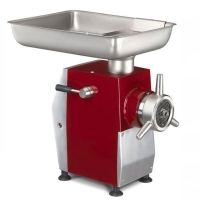Cooling towers are vital components in many industrial and commercial cooling systems, tasked with dissipating heat from various processessystems. While much attention is often given to their maintenance during warmer months, proper care during winter is equally crucial. Here’s why winter maintenance is essential for ensuring cooling tower efficiency and performance.
Visit: 2056 | Ways to increase visits
Short url: https://freeseobacklink.com/251
ID: 251 | Report (5 Score)
Date of registration: 29 Oct 2024 14:06:44
Update: 29 Oct 2024 14:06:44
Introduction
Cooling towers are essential components of industrial and commercial facilities, playing a crucial role in maintaining the temperature of various processes and equipment. However, as winter approaches, the maintenance and operation of cooling towers become even more critical. The colder temperatures, freezing conditions, and reduced demand for cooling can significantly impact the performance and efficiency of cooling towers if proper maintenance measures are not implemented. In this article, we will explore the importance of cooling tower maintenance in winter, the specific challenges posed by cold weather, and the best practices for ensuring optimal performance during the winter months.
Risk to Cooling Towers in Winter
The biggest additional risk associated with cooling towers in the wintertime is the potential for freezing of the water within the tower. In freezing temperatures, the water turns to ice &ndash which can significantly impact the effectiveness cooling towers have in the evaporation process. Preventing and/or managing ice formation is crucial when cooling towers are exposed to the elements in cold climates. Even a daytwo of freezing temperatures can have disastrous consequences on the functioning and health of a tower.
Precautions When Operating Cooling Towers in Subfreezing Temperatures
No matter the type of cooling tower installed, there are several strategies that owners can take to ensure they protect their units during cold temperatures. The first tactic is simple &ndash closely monitor the tower during periods of below-freezing temperatures. Even with units that function via automated controls, having the eye of a human regularly on it can mean detecting issues before they escalate and affect tower operation.
Keeping the water flow rate within the tower at least above the design minimum is another smart strategy. Doing so creates an even water distribution throughout the fill media and prevents areas with less water from freezing more rapidly.
Equipping towers with VFDs (variable frequency drives) rather than fan cycling can also reduce the risk of water freezing. When fans are off in cells (as is the case when using fan cycling), temperatures in those cells can decrease quickly to below freezing. VFDs help to prevent any freezing and thus maintain a functioning tower.
Likely, the most beneficial strategy to preventing cold weather issues with cooling towers is maintaining a heat load at all times. Not doing so means that water within the unit begins to equalize with the wet-bulb temperature. Once this happens, ice begins to form which as it builds &ndash prevents adequate airflow and can even damage the tower&rsquos fill.
Challenges of Winter Maintenance for Cooling Towers
Winter presents unique challenges for the maintenance of cooling towers, primarily due to the impact of cold temperatures on the water within the tower. Some of the key challenges include:
· Freezing: One of the most significant challenges during winter is the risk of freezing. If the water within the cooling tower freezes, it can cause damage to the tower structure, fill media, and piping system. Additionally, frozen water can lead to a loss of heat transfer efficiency and hinder the overall performance of the cooling tower.
· Reduced Demand: In many industrial facilities, the cooling load is significantly reduced during winter, leading to lower water flow rates and less frequent operation of the cooling tower. This reduced demand can create stagnant conditions within the tower, increasing the risk of scale formation, corrosion, and biological growth.
· Water Treatment: Cold weather can impact the effectiveness of water treatment chemicals, potentially leading to issues such as scale buildup, corrosion, and microbiological contamination within the cooling tower.
· Energy Efficiency: Cold temperatures can affect the efficiency of the fans, pumps, and other mechanical components of the cooling tower, leading to increased energy consumption and reduced overall performance.
Best Practices for Cooling Tower Maintenance in Winter
To address the specific challenges posed by winter conditions, the following best practices should be implemented for the maintenance of cooling towers during the colder months:
· Winterization: Prior to the onset of winter, it is crucial to conduct a thorough winterization process for the cooling tower. This may include draining the water from the tower, ensuring proper insulation of exposed piping, and protecting vulnerable components from freezing temperatures.
· Water Treatment: Adjust the water treatment program to account for the lower temperatures and reduced demand. This may involve increasing the dosage of inhibitors and biocides to prevent scale formation, corrosion, and microbiological growth.
· Inspections and Cleaning: Regular inspections of the cooling tower during winter are essential to identify any signs of freezing, damage,buildup. Additionally, cleaning the tower and removing any debris, scale,biological growth can help maintain optimal performance.
· Mechanical Components: Ensure that the mechanical components of the cooling tower, such as fans, motors, and pumps, are properly maintained and protected from the cold. This may involve lubricating moving parts, checking for proper insulation, and ensuring that the equipment is operating efficiently.
· Monitoring: Implement a comprehensive monitoring program to track the performance of the cooling tower during winter. This may include monitoring water flow rates, temperature differentials, and energy consumption to identify any deviations from normal operation.
· Emergency Preparedness: Develop a contingency plan for addressing any unexpected issues that may arise during winter, such as sudden temperature drops, power outages,equipment failures. Having a proactive approach to emergency preparedness can help minimize downtime and prevent damage to the cooling tower.
Importance of Winter Maintenance for Cooling Towers
The maintenance of cooling towers during winter is of paramount importance for several reasons:
· Equipment Protection: Proper winter maintenance helps protect the cooling tower and its components from damage caused by freezing temperatures, reducing the risk of costly repairs and downtime.
· Performance Optimization: By implementing winter maintenance measures, the efficiency and performance of the cooling tower can be maintained, ensuring that it is ready to meet the cooling demands when temperatures rise.
· Energy Efficiency: Well-maintained cooling towers operate more efficiently, reducing energy consumption and minimizing the environmental impact during winter.
· Longevity: Regular winter maintenance can extend the lifespan of the cooling tower, preserving its functionality and avoiding premature replacement.
Conclusion
In conclusion, the maintenance of cooling towers during winter is essential for ensuring optimal performance, protecting equipment, and maintaining energy efficiency. By addressing the specific challenges posed by cold weather, such as freezing, reduced demand, and water treatment issues, facilities can mitigate potential risks and maintain the functionality of their cooling towers throughout the winter months. Implementing best practices for winter maintenance, including winterization, water treatment adjustments, inspections, and emergency preparedness, is crucial for the long-term reliability and performance of cooling towers. As winter approaches, it is imperative for facility managers and operators to prioritize the maintenance of cooling towers to ensure their continued efficiency and functionality.
Phone: +98 - 02126709918 / 02126709368 / 02122645890 / 02126602776 فکس داخلی 3
Mobile: 989213602690
Website: https://badrantahvie.com/ (Nofollow)
Location: 35.76168, 51.435904
Country: Iran, Islamic Republic of
Province: Tehran
City: Tehran
Address: Postal code 1911699419, No. 4, Unit 7, Behbahani Alley, Tabrizian St., Mirdamad Blvd., Tehran, Iran


 The Best Child Neuropsychiatrist Specialist
The Best Child Neuropsychiatrist Specialist The gym in Saadatabad
The gym in Saadatabad Design the dress you want
Design the dress you want buy the Meat Grinders and Sausage Makers
buy the Meat Grinders and Sausage Makers Abresan Tehran: Your One-Stop Shop for Water Filtration and Cooling So
Abresan Tehran: Your One-Stop Shop for Water Filtration and Cooling So The Best English Class in Sharjah for All Levels Call 0568723609
The Best English Class in Sharjah for All Levels Call 0568723609 A unique companion to connect to the future
A unique companion to connect to the future
Register comment (5 Score)